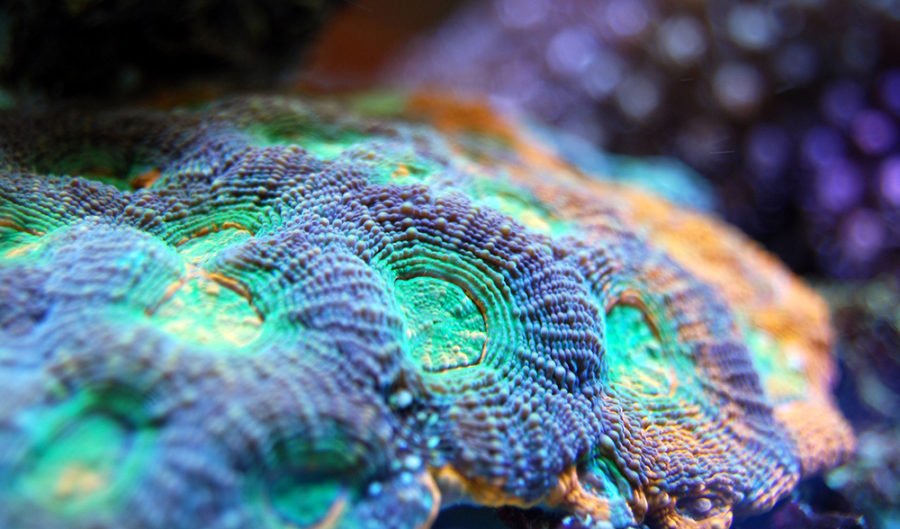Growth rings, similar to ‘tree rings’ discovered in Great Barrier Reef coralline algae

FOR THE VERY first time, coral scientists have identified growth bands, similar to tree rings, in an encrusting tropical coralline algae species, which scientists say will help them monitor the impacts of climate change on the Great Barrier Reef (GBR).
The growth rings—discovered in the algae of an important reef-building coral known as Porolithon onkodes that is already being successfully grown in labs, enhances our understanding of the corals lifecycle and will inform the future of genetically enhanced coral.
“We can definitely grow coralline algae in the lab. In fact our lab is currently investigating the life cycles of coralline algae,” said Bonnie Lewis, author of the paper, published today in PLOS ONE. “We can then use this knowledge to enhance growth of coralline algae, and to understand their potential for acclimation and adaptation to future environmental changes.”
Samples of the algae were taken from Heron Island in the southern GBR over a period of 15 months. “After each season the samples were replaced with the next seasons growth samples. From this we could pinpoint seasonal growth rates and the time of reproduction,” Bonnie explained.
Bonnie says that while growth bands have been identified in species of coralline algae from temperate and Polar Regions, this is the first time growth bands have been found in a tropical coralline algae species. Banding in other species of coralline algae on the GBR is yet be seen, however shes says it can’t be ruled out just yet.
The discovery of growth bands in Porolithon onkodes coralline algae is a small step on the road to better understanding how we might prevent further damage to the GBR, according to Bonnie.
“Currently, very little is known on the potential of coralline algae to acclimate and adapt to ocean warming. Many species of coralline algae have survived past ocean warming and acidification events, so there is potential for adaptation, but more research needs to be done in this area to understand the mechanisms behind this adaptation.”
READ MORE:
- Heron Island: Queensland’s tropical paradise.
- What exactly are super corals?
- New signs that bleached corals are making a recovery.
- In pictures: a close-up look at the Great Barrier Reef’s bleaching.

